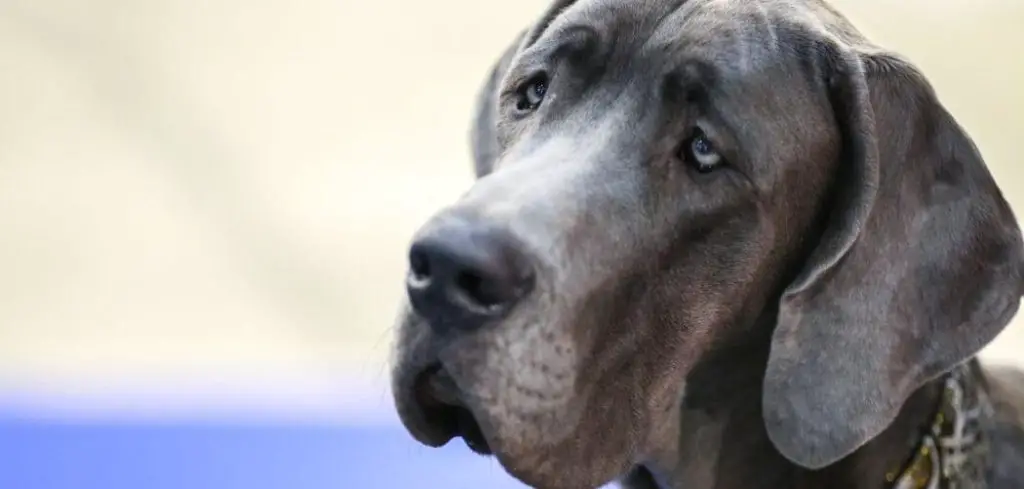If your dog is experiencing reverse sneezing and has also stopped eating, it’s understandable to feel concerned. While reverse sneezing can be common and often harmless, when it’s paired with a loss of appetite, it may point to a deeper health issue that needs attention.
We outline the common causes of dog reverse sneezing and not eating, what you can do at home, and when to seek veterinary help.
Dog Reverse Sneezing and Not Eating — Why It Happens
Reverse sneezing paired with loss of appetite is usually triggered by irritation, inflammation, or underlying illness. It can be due to respiratory infections, allergies, foreign objects in the airway, or even gastrointestinal discomfort.
Sometimes, anxiety or dental pain can also lead to these symptoms. If your dog’s reverse sneezing is frequent and they stop eating, it’s important to investigate both respiratory and systemic causes.

Common Causes of Dog Reverse Sneezing and Not Eating
Upper Respiratory Infection
Upper respiratory infections caused by viruses or bacteria can irritate the nasal passages and throat, leading to reverse sneezing.
These infections also commonly result in a reduced appetite due to congestion, fever, or general malaise.
You may notice nasal discharge, coughing, or lethargy alongside the sneezing and loss of appetite.
Infections can progress quickly and may require antibiotics or supportive care.
Nasal Mites or Irritants
Foreign bodies like grass seeds or irritants like dust, smoke, or perfume can trigger bouts of reverse sneezing.
If the nasal passage becomes inflamed or uncomfortable, your dog may stop eating due to stress or nausea.
Frequent sneezing, pawing at the face, or sudden avoidance of certain areas could indicate environmental triggers.
Persistent exposure can lead to inflammation or secondary infections.
Read more: Dog Breathing Heavily and Not Eating (When to worry)
Dental Pain or Oral Issues
Dental disease, cracked teeth, or inflamed gums can cause enough discomfort to stop a dog from eating.
Pain in the mouth may also cause sneezing or reverse sneezing if the discomfort radiates near the sinuses or nasal cavity.
Look for signs like drooling, bad breath, or favoring one side of the mouth when chewing.
Untreated dental problems can worsen quickly and lead to systemic infection.
Allergies
Environmental allergies—like pollen, mold, or household cleaners—can lead to inflammation in the nasal cavity and throat, triggering reverse sneezing.
Allergic dogs may also experience nausea or digestive upset that causes appetite loss.
You may see additional signs like itchy skin, red ears, or watery eyes.
Seasonal allergies can flare up suddenly and may require antihistamines or dietary changes.
Nausea or Gastrointestinal Issues
If your dog is feeling nauseated, they may engage in reverse sneezing due to the sensation of postnasal drip or esophageal irritation.
Nausea often causes dogs to lose their appetite and may be caused by indigestion, parasites, or more serious GI conditions.
You might also notice lip licking, grass eating, or drooling as additional signs.
Some cases resolve on their own, but recurring nausea should be assessed by a vet.
Anxiety or Stress
Stress can trigger both reverse sneezing and a lack of interest in food.
Common causes include recent changes at home, loud noises, new pets, or separation anxiety.
Panting, pacing, hiding, and clinginess often accompany these symptoms.
If the symptoms persist for more than a day or two, or interfere with your dog’s daily life, consult your vet.
What to Do If Your Dog Is Reverse Sneezing and Not Eating
Start by observing your dog’s behavior and symptoms closely. A few isolated sneezing episodes aren’t usually an emergency, but persistent sneezing with appetite loss can indicate something more serious.
Make sure your dog is in a calm, quiet space. Remove any potential irritants like scented candles or cleaning sprays from their environment.
Check their nose and mouth for signs of discharge, swelling, or foreign objects. Avoid poking too far inside the nostrils or mouth.
Encourage hydration by offering fresh water or ice cubes. Try warming up their food or adding a bit of broth to make meals more appealing.
If they show no improvement within 24 hours, or if symptoms worsen, call your vet.
When to Call or Visit Your Vet
Call your vet immediately if your dog:
Has trouble breathing or shows open-mouth breathing
Refuses to eat or drink for more than 24 hours
Has nasal discharge that is yellow, green, or bloody
Is extremely lethargic or unresponsive
Shows signs of pain when touched near the nose or mouth
These signs may indicate an infection, obstruction, or more serious illness that requires prompt treatment.
Read more: Dog Gagging and Not Eating (When it’s more than just a tickle)
Key Takeaway
Reverse sneezing in dogs can be harmless on its own—but when it’s accompanied by not eating, it’s a red flag. From infections and allergies to dental pain and stress, several causes could be at play.
Monitor your dog carefully, remove any environmental triggers, and try to encourage gentle eating and hydration. If the symptoms persist or seem to worsen, your veterinarian can help pinpoint the cause and recommend the right treatment.
When in doubt, it’s always best to have your dog checked to ensure their comfort and health are fully protected.
